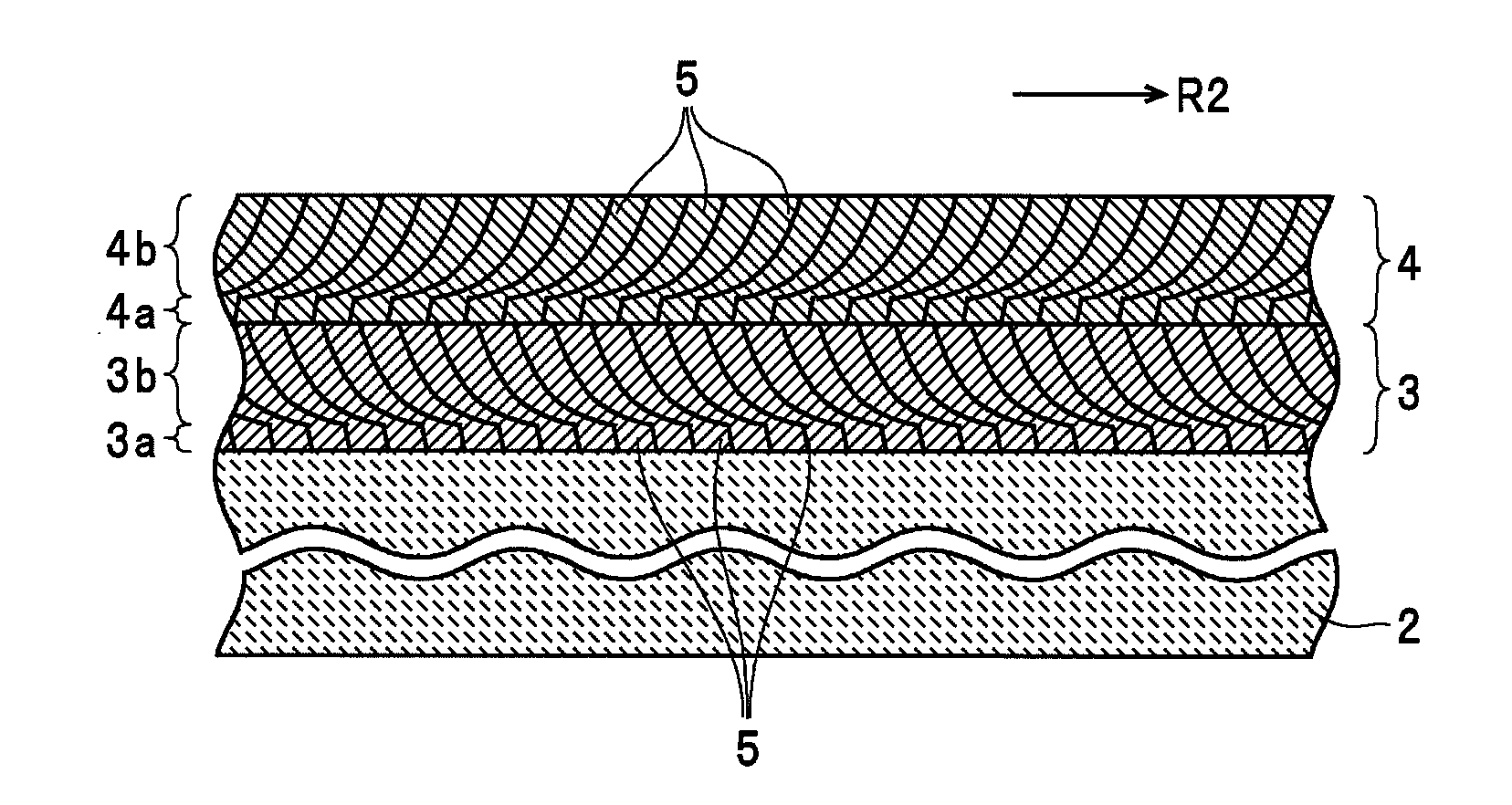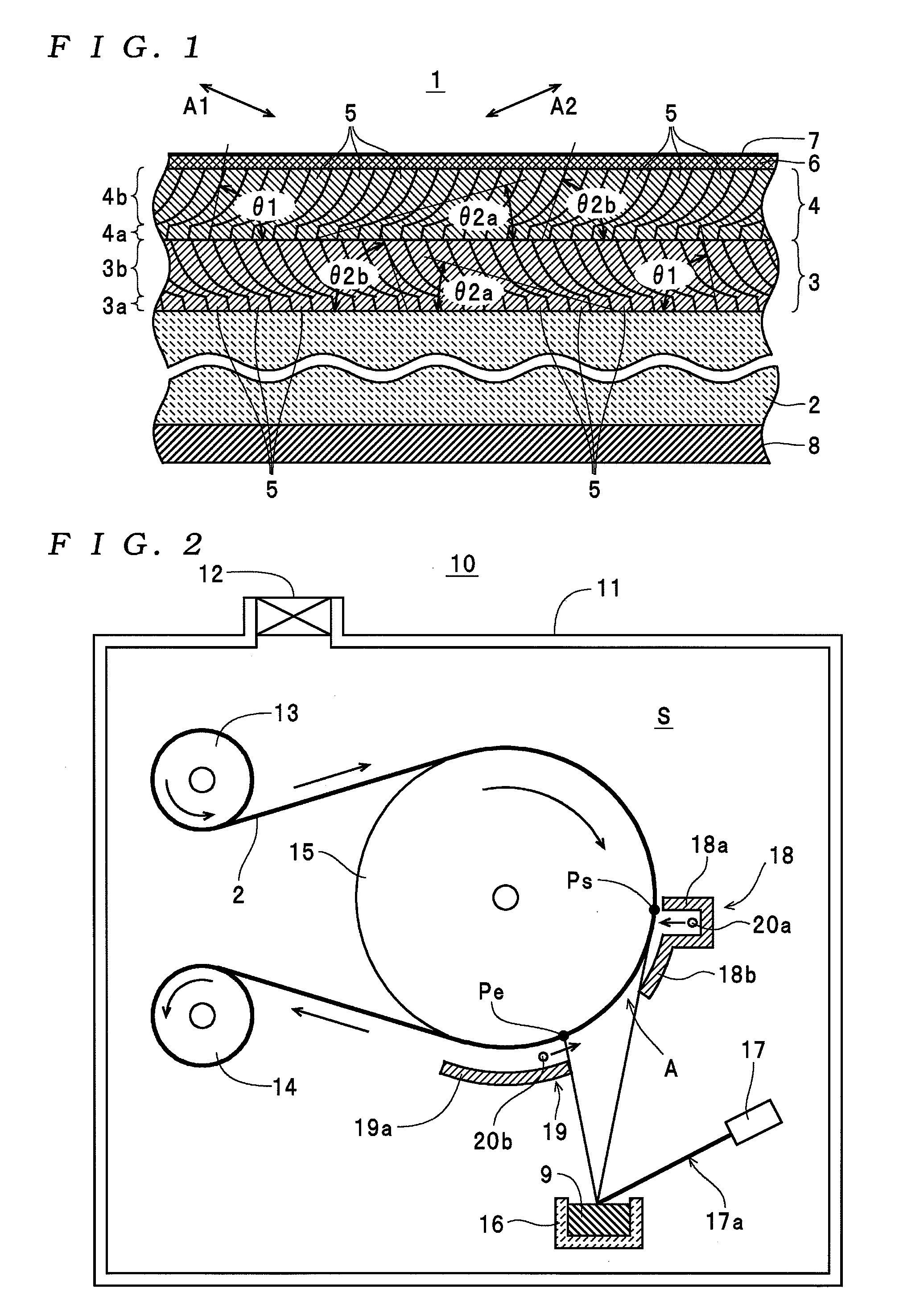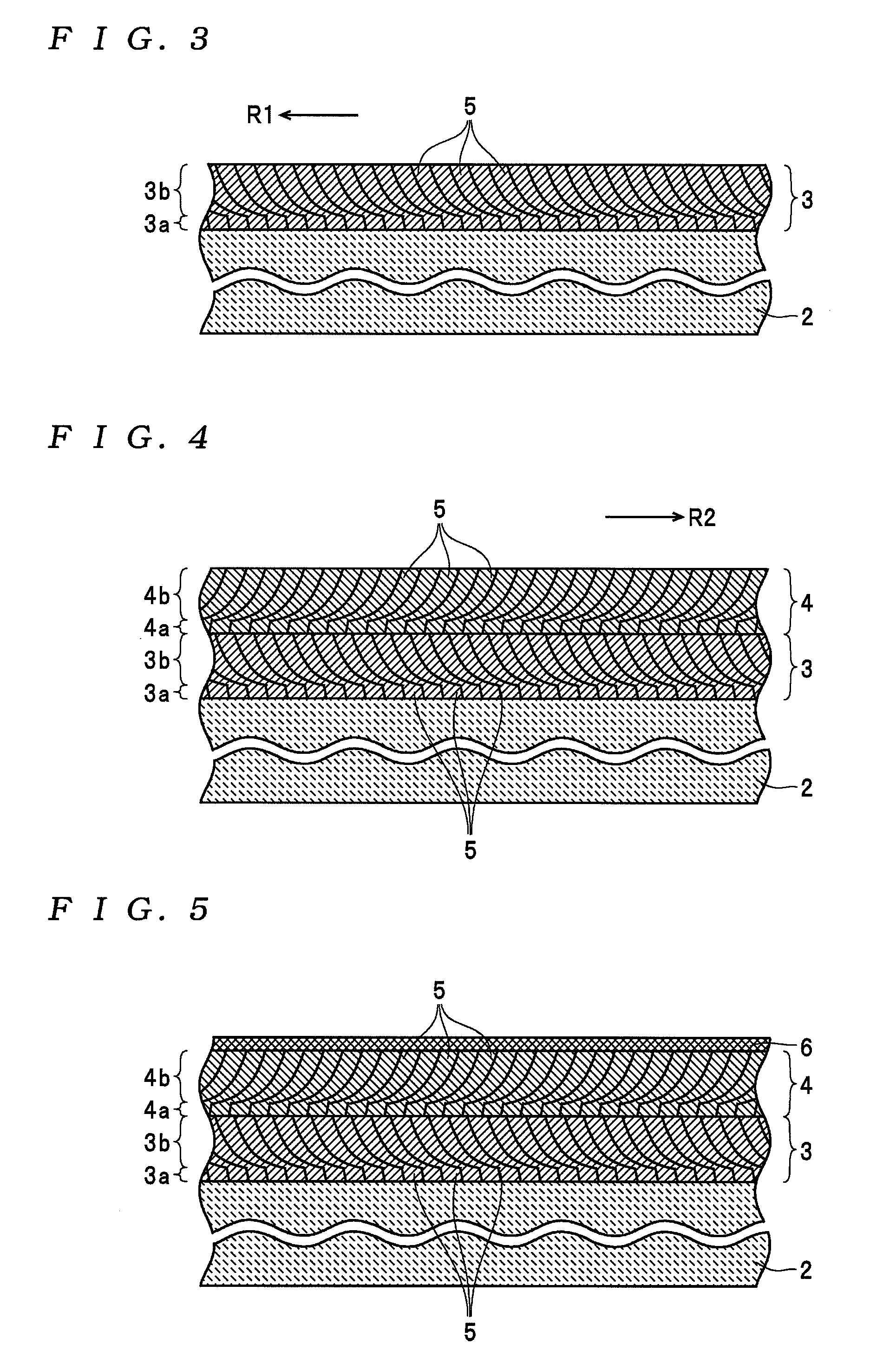Magnetic recording medium, magnetic recording medium manufacturing apparatus, and method of manufacturing a magnetic recording medium
a technology of magnetic recording medium and manufacturing apparatus, which is applied in the field of magnetic recording medium, magnetic recording medium manufacturing apparatus, and method of manufacturing a magnetic recording medium, can solve the problems of large loss of space between the recording/reproducing head and the surface of the second magnetic layer, deterioration of the magnetization characteristics of both magnetic layers, and large drop in the signal level of the output signal
- Summary
- Abstract
- Description
- Claims
- Application Information
AI Technical Summary
Benefits of technology
Problems solved by technology
Method used
Image
Examples
example 1
[0078]The first magnetic layer and the second magnetic layer were formed in the mentioned order on the non-magnetic substrate 2 so that the thickness of the former growth portions of the first magnetic layer was 4 nm, the thickness of the latter growth portions of the first magnetic layer was 29 nm, the thickness of the former growth portions of the second magnetic layer was 6 nm, and the thickness of the latter growth portions of the second magnetic layer was 51 nm. As a result, the thickness of the first magnetic layer was 33 nm and the thickness of the second magnetic layer was 57 nm, so that the ratio of the thickness of the first magnetic layer to the thickness of the second magnetic layer was 0.58. Also, the ratio of the thickness of the former growth portions to the thickness of the latter growth portions of the first magnetic layer was 0.14 and the ratio of the thickness of the former growth portions to the thickness of the latter growth portions of the second magnetic layer...
example 2
[0079]The first magnetic layer and the second magnetic layer were formed in the mentioned order on the non-magnetic substrate 2 so that the thickness of the former growth portions of the first magnetic layer was 4 nm, the thickness of the latter growth portions of the first magnetic layer was 28 nm, the thickness of the former growth portions of the second magnetic layer was 5 nm, and the thickness of the latter growth portions of the second magnetic layer was 47 nm. As a result, the thickness of the first magnetic layer was 32 nm and the thickness of the second magnetic layer was 52 nm, so that the ratio of the thickness of the first magnetic layer to the thickness of the second magnetic layer was 0.62. Also, the ratio of the thickness of the former growth portions to the thickness of the latter growth portions of the first magnetic layer was 0.14 and the ratio of the thickness of the former growth portions to the thickness of the latter growth portions of the second magnetic layer...
example 3
[0080]The first magnetic layer and the second magnetic layer were formed in the mentioned order on the non-magnetic substrate 2 so that the thickness of the former growth portions of the first magnetic layer was 4 nm, the thickness of the latter growth portions of the first magnetic layer was 31 nm, the thickness of the former growth portions of the second magnetic layer was 5 nm, and the thickness of the latter growth portions of the second magnetic layer was 42 nm. As a result, the thickness of the first magnetic layer was 35 nm and the thickness of the second magnetic layer was 47 nm, so that the ratio of the thickness of the first magnetic layer to the thickness of the second magnetic layer was 0.74. Also, the ratio of the thickness of the former growth portions to the thickness of the latter growth portions of the first magnetic layer was 0.13 and the ratio of the thickness of the former growth portions to the thickness of the latter growth portions of the second magnetic layer...
PUM
| Property | Measurement | Unit |
|---|---|---|
| thickness | aaaaa | aaaaa |
| inclination angle | aaaaa | aaaaa |
| inclination angle | aaaaa | aaaaa |
Abstract
Description
Claims
Application Information
 Login to View More
Login to View More - R&D
- Intellectual Property
- Life Sciences
- Materials
- Tech Scout
- Unparalleled Data Quality
- Higher Quality Content
- 60% Fewer Hallucinations
Browse by: Latest US Patents, China's latest patents, Technical Efficacy Thesaurus, Application Domain, Technology Topic, Popular Technical Reports.
© 2025 PatSnap. All rights reserved.Legal|Privacy policy|Modern Slavery Act Transparency Statement|Sitemap|About US| Contact US: help@patsnap.com



